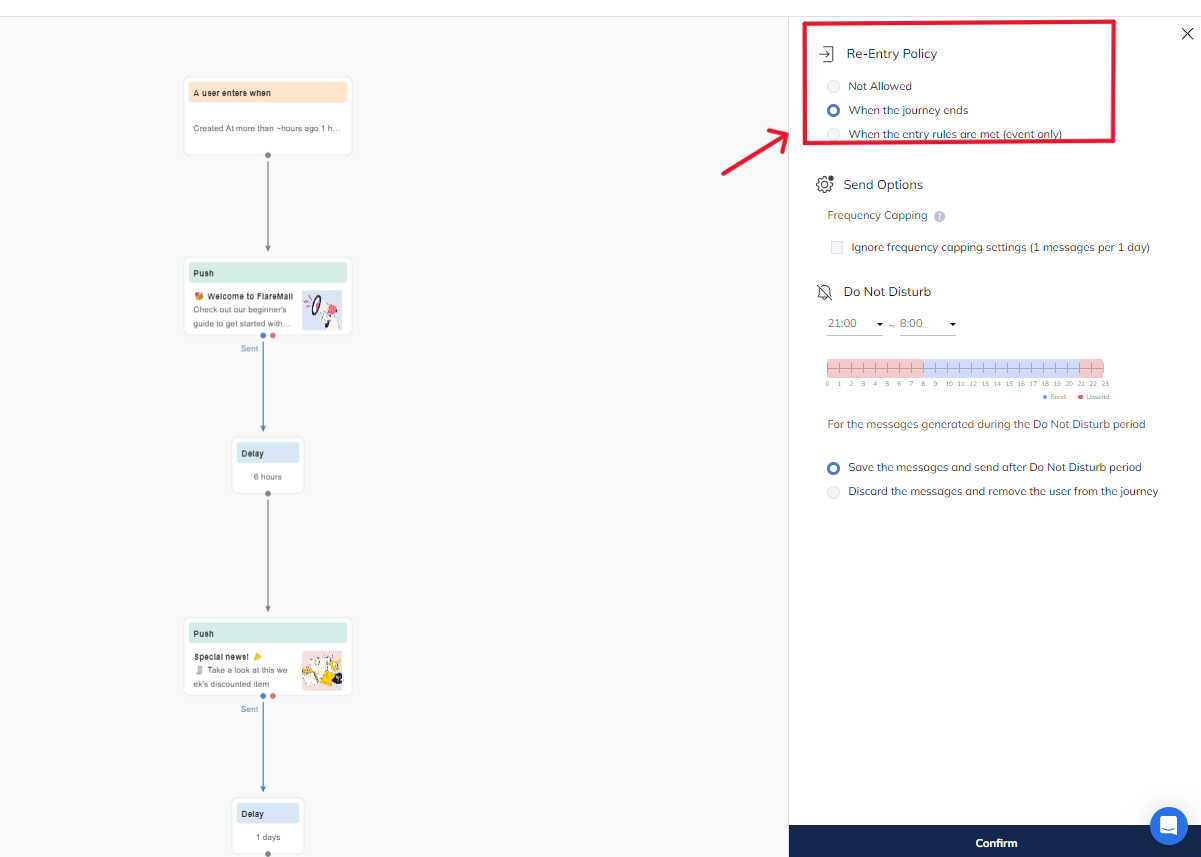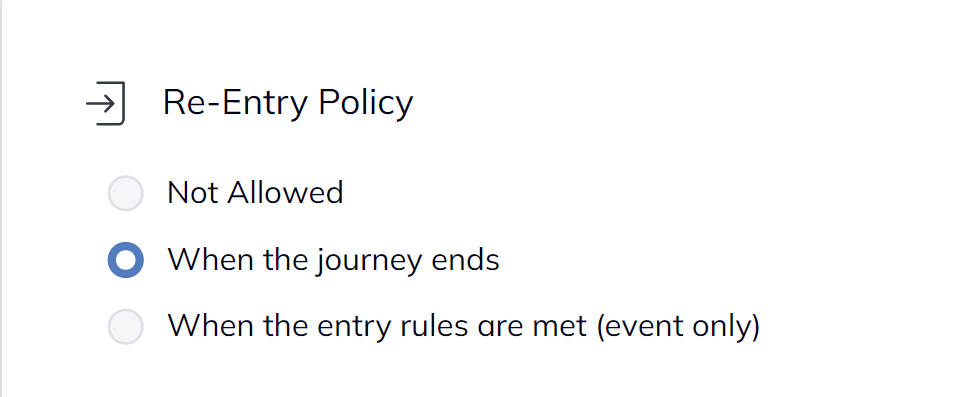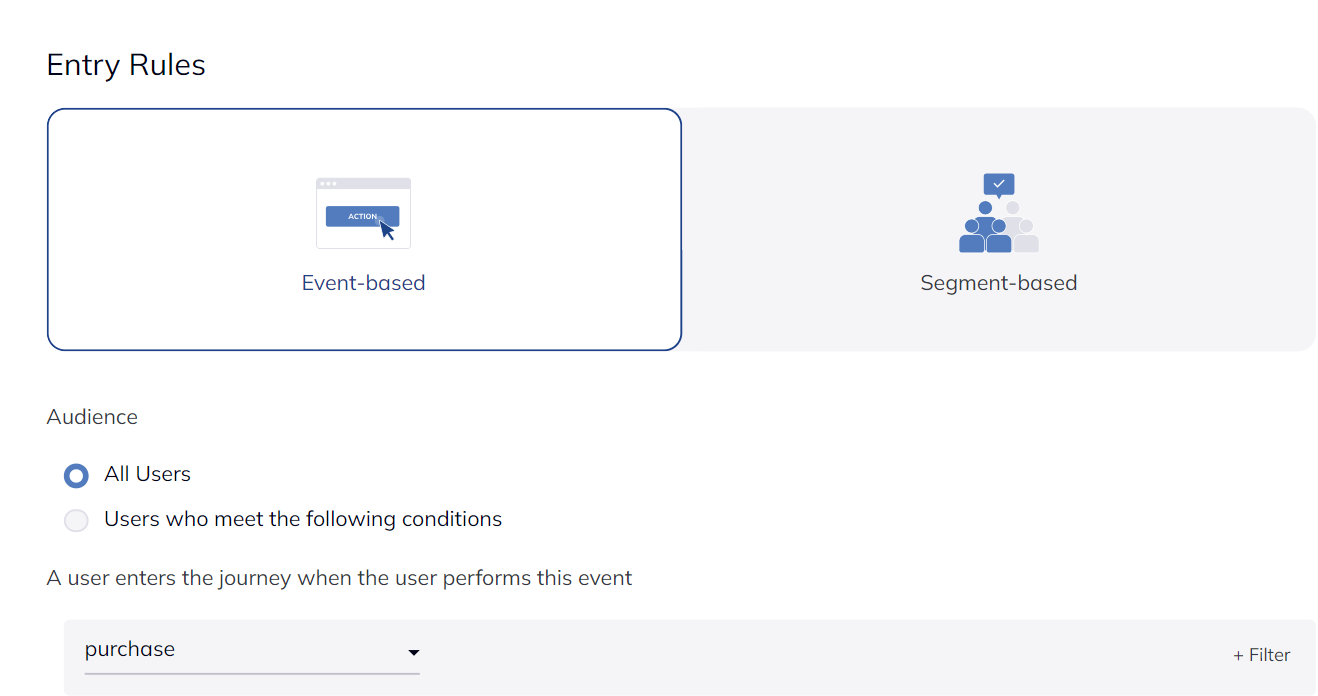Feature Guide: Re-Entry Policy

In previous articles, we explored two key marketing automation features in FlareLane—Frequency Capping and Do Not Disturb—both aimed at managing user fatigue through advanced personalization. Today, we’ll focus on another powerful feature: the Re-Entry Policy, which controls message frequency across different scenarios, including event-based campaigns.
✅The Re-Entry Policy controls user re-entry into campaigns, ensuring personalized and timely messaging.
✅It automates recurring campaigns like cart reminders and renewals based on user actions.
✅Paired with Frequency Capping and Do Not Disturb, it reduces fatigue and boosts engagement.
What's the Re-Entry Policy?
The Re-Entry Policy feature allows you to define the maximum number of times and the rules for how often target users can be added to a customer journey. For instance, certain message sequences may be intended to be sent to users who make their first purchases only. On the other hand, recurring campaigns, such as abandoned cart reminders or reactivation campaigns for inactive users, should trigger whenever the user qualifies. This feature also helps ensure adequate spacing between repeated messages to minimize user fatigue.

FlareLane’s Re-Entry Policy is designed for brands to diversify marketing approaches in their campaigns. When used together with Frequency Capping and Do Not Disturb features, you can further maximize the personalization of the messages and minimize user fatigue. Here's what the Re-Entry Policy looks like:

When configuring the Re-Entry Policy, you may choose from the following three options based on your preferences:
- Not Allowed: Users will not re-enter the journey after the first entry.
- When the Journey Ends: Users will re-enter the same journey once the journey is complete.
- When the Entry Rules Are Met (event-based only): Users will re-enter the journey only if their start and end conditions are event-based.
To explain the third option further, FlareLane requires clients to configure Entry Rules when creating customer journeys. If you choose the Event-based option, your users will enter a customer journey when they perform specified actions that trigger an event, such as adding an item to the cart. If you choose the Segment-based option, the journey begins when a user meets specified criteria (e.g., when the last login was seven days ago). Here's how FlareLane's Event-based configuration looks like on a console:

Customer Success Stories
In this section, we'll highlight how our clients have leveraged the Re-Entry Policy along with other marketing automation features to optimize their marketing campaigns:
Case A: Optimizing Marketing Campaign by Limiting Re-Engagement
Our client, a global health and wellness brand, aimed to prevent message overload, especially after customers had already made their first purchase and received a discount coupon. Here's how they utilized FlareLane's "Not Allowed" option in the Re-Entry Policy to address this issue:
Problem: After a customer made the first purchase and received a one-time 10% discount coupon, they were still being re-entered into campaigns due to their eligibility. This led to unnecessary reminders, undermining the marketing campaign's efficiency.
Solution: The brand decided to implement the "Not Allowed" option in FlareLane's Re-Entry Policy. This prevented customers from re-entering the journey once they had completed it, ensuring that users only received one coupon after their first purchase.
Result: The brand successfully reduced redundant reminders and increased click-through rates for other active campaigns by 15%. Additionally, customer feedback showed a noticeable decline in complaints related to excessive messaging, reinforcing a positive brand experience.
Case B: Increasing Abandoned Cart Recovery with Event-Based Re-Entry Policy
Our client is a B2C online retail brand. Recovering abandoned carts was a persistent issue as they struggled to engage users who left their carts behind without completing purchases. Here’s how they solved this challenge using the Re-Entry Policy:
Problem: The client experienced low cart recovery rates due to inconsistent reminders and limited engagement. Users who abandoned their carts were not receiving follow-up messages at optimal times, resulting in lost potential sales.
Solution: They implemented FlareLane’s Re-Entry Policy using the "When the Entry Rules Are Met" option. This allowed them to create an event-based customer journey that triggered every time a user added an item to their cart but didn’t complete the purchase. The journey automatically re-entered users into a sequence of personalized reminders if they abandoned their cart again, ensuring timely and relevant communication.
Result: This strategy led to a 28% increase in cart recovery rates, while users experienced fewer instances of message fatigue.
Case C: Boosting Subscription Renewals With the Re-Entry Policy
Our client is a B2B SaaS brand offering business management tools that wanted to improve its stagnating subscription renewal rates. Here’s how they leveraged the Re-Entry Policy to address this challenge:
Problem: The client struggled to retain users nearing the end of their subscription period. Their previous renewal campaigns lacked personalization, resulting in low renewal rates and increased churn. Users often received renewal reminders too early or too late, missing the ideal opportunity to re-engage.
Solution: Using FlareLane’s Re-Entry Policy with the "When the Journey Ends" option, the client set up a journey that triggered renewal reminder messages seven days before a user's subscription expired. Once the journey ended, the policy ensured that users were automatically re-entered into a follow-up campaign if they had not yet renewed. This created a seamless flow of targeted renewal reminders spaced out at optimal intervals. Additionally, the Frequency Capping feature was applied to prevent overwhelming users with excessive messages.
Result: The client saw a 20% increase in subscription renewals and a 12% reduction in churn.
Final Thoughts
The Re-Entry Policy is a powerful tool that allows brands to tailor their customer journeys precisely. It ensures that users receive timely, relevant messages without overwhelming them.
Whether recovering abandoned carts or boosting subscription renewals, this feature offers the flexibility to effectively re-engage users based on their behavior and journey progress.
Combined with Frequency Capping and Do Not Disturb features, the Re-Entry Policy empowers brands to minimize user fatigue and maximize engagement, ultimately driving better campaign performance and stronger customer relationships.
FlareLane is a cross-channel customer engagement platform that features a comprehensive solution for enhancing customer interaction and engagement. With in-app messaging, push notifications, advanced analytics, real-time communication tools, and personalized marketing strategies, we can help you create meaningful and lasting customer relationships.
For more information on our Re-Entry Policy, visit our guide here.
Ready to take your customer engagement to the next level? Learn more about how we can help your brand thrive.


